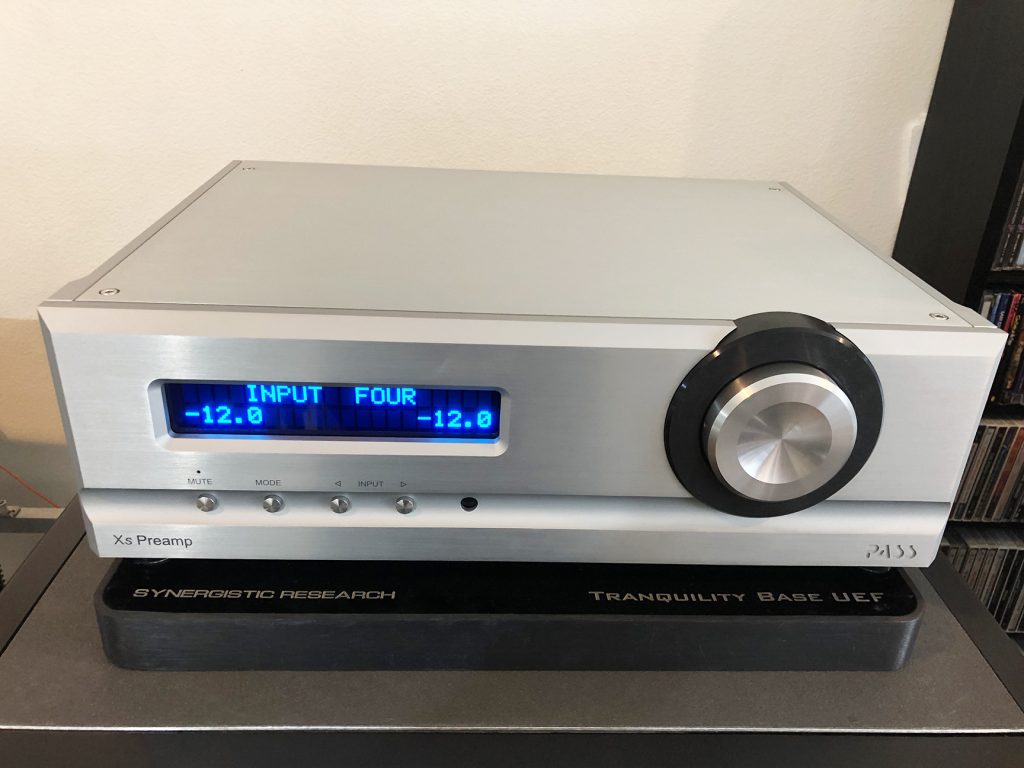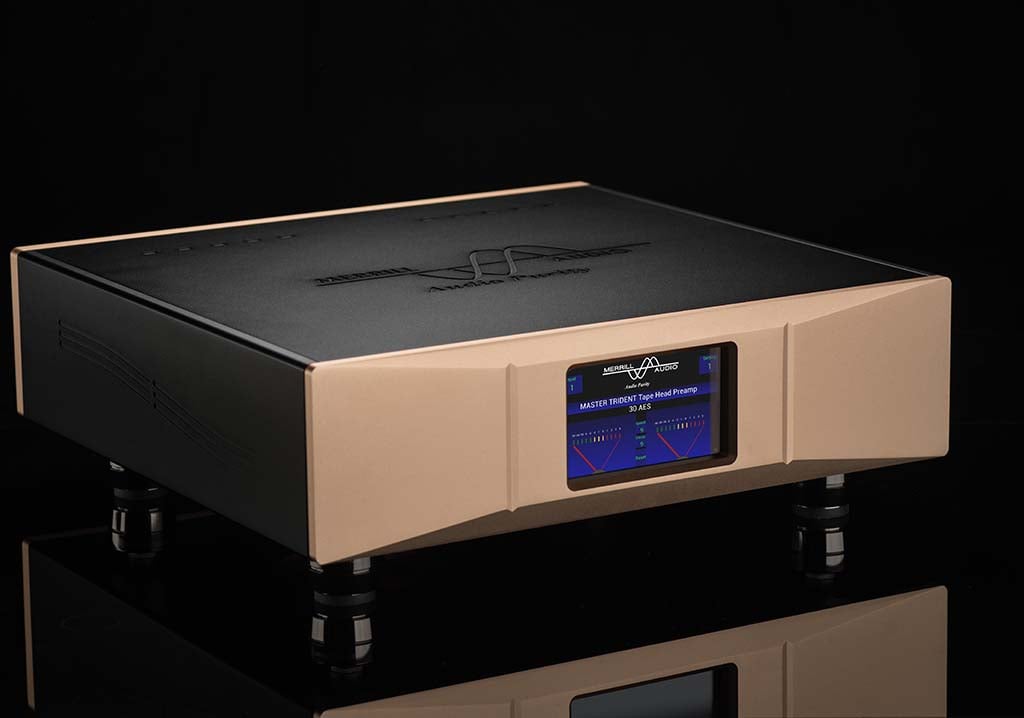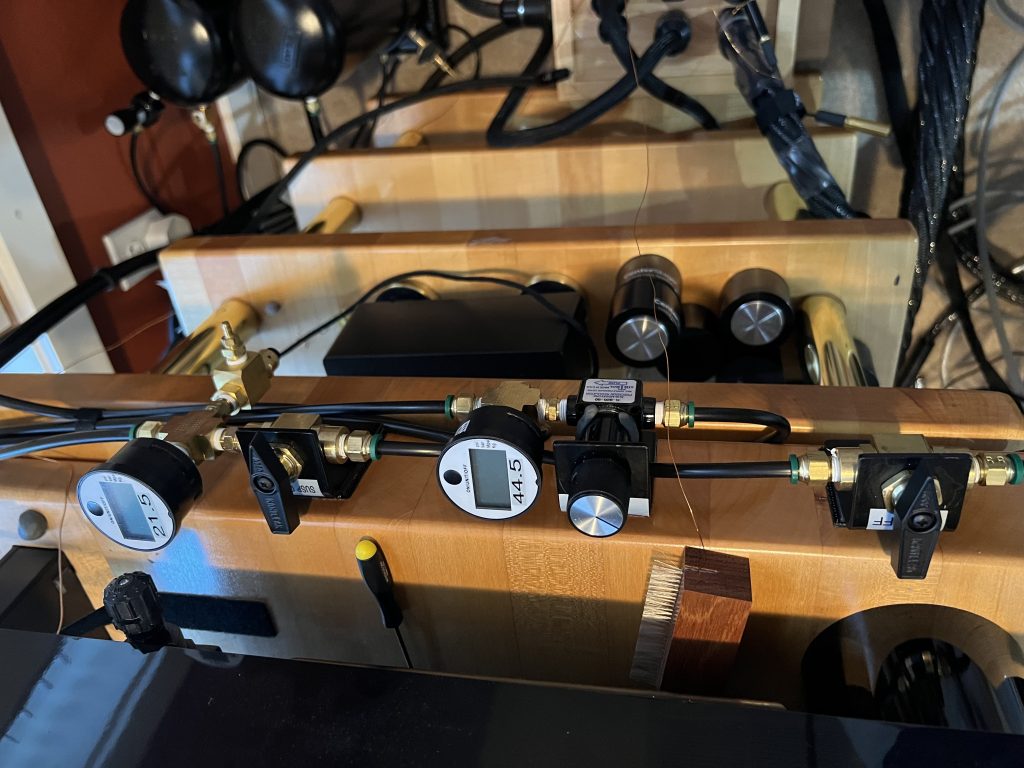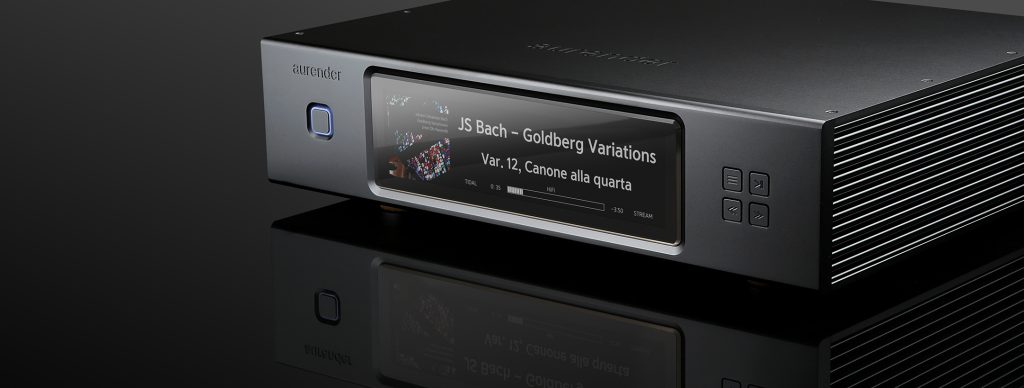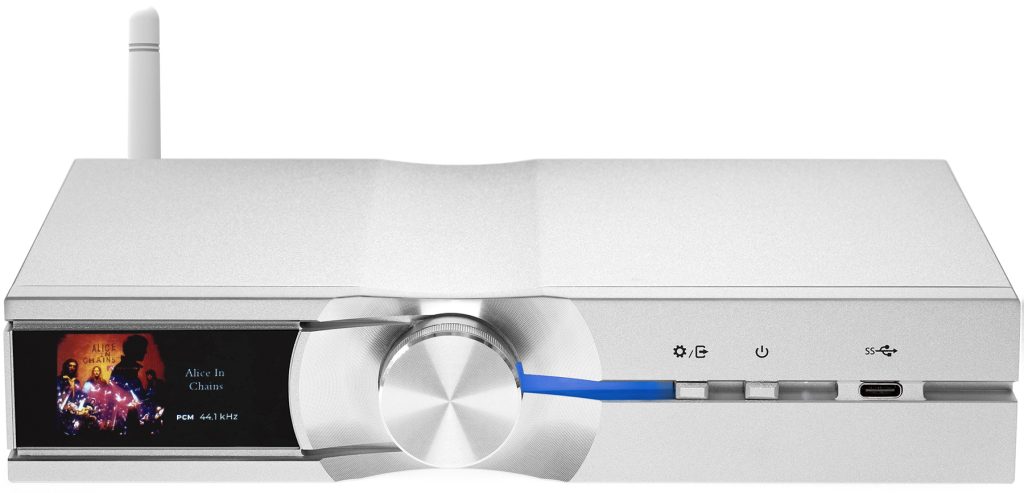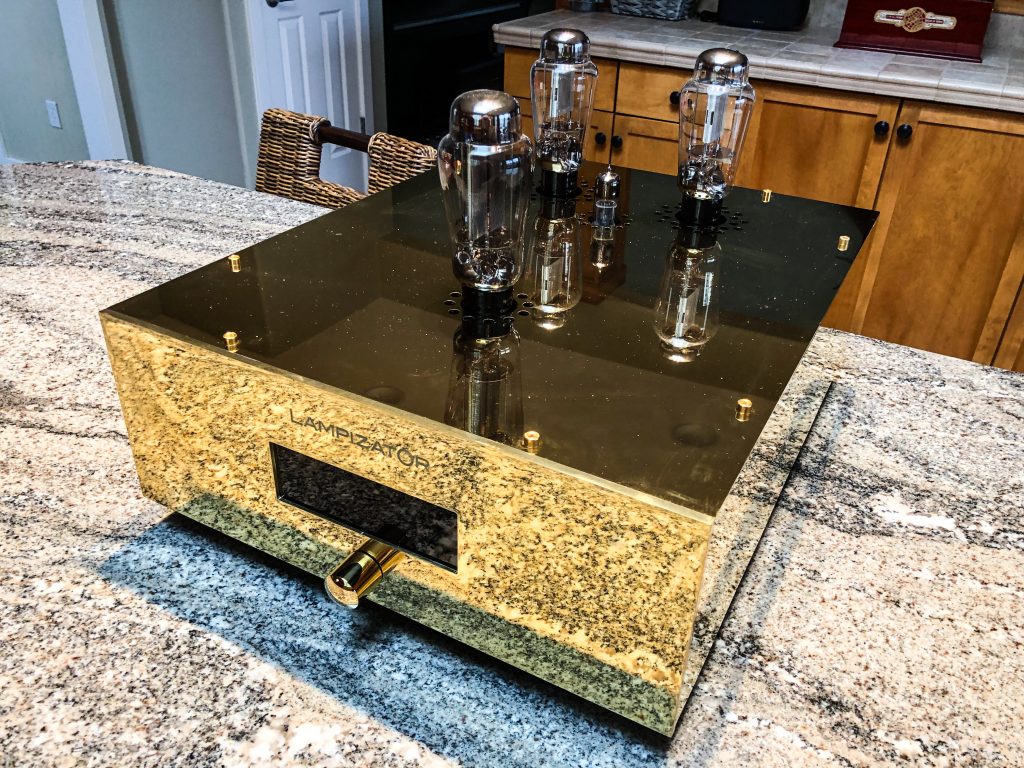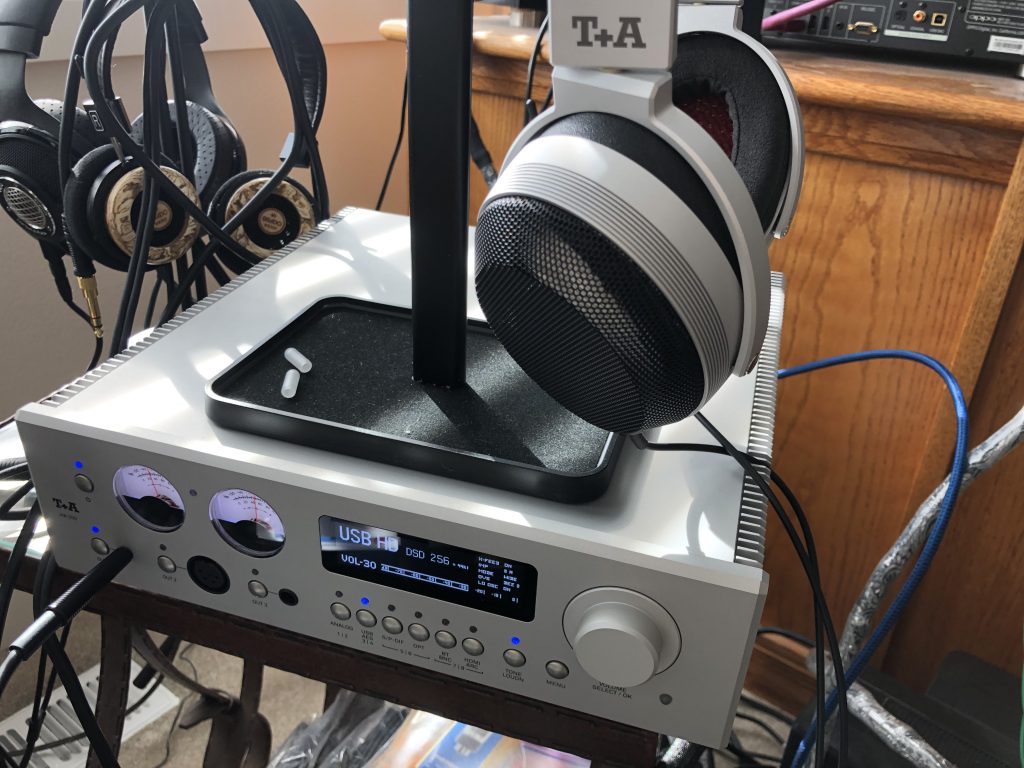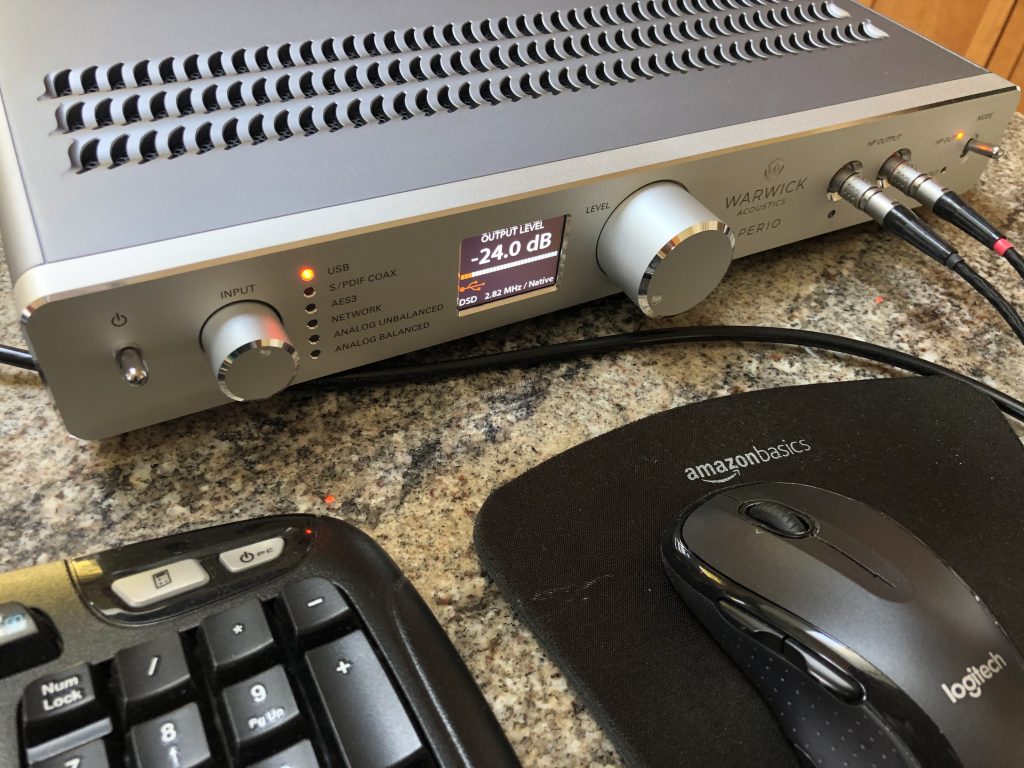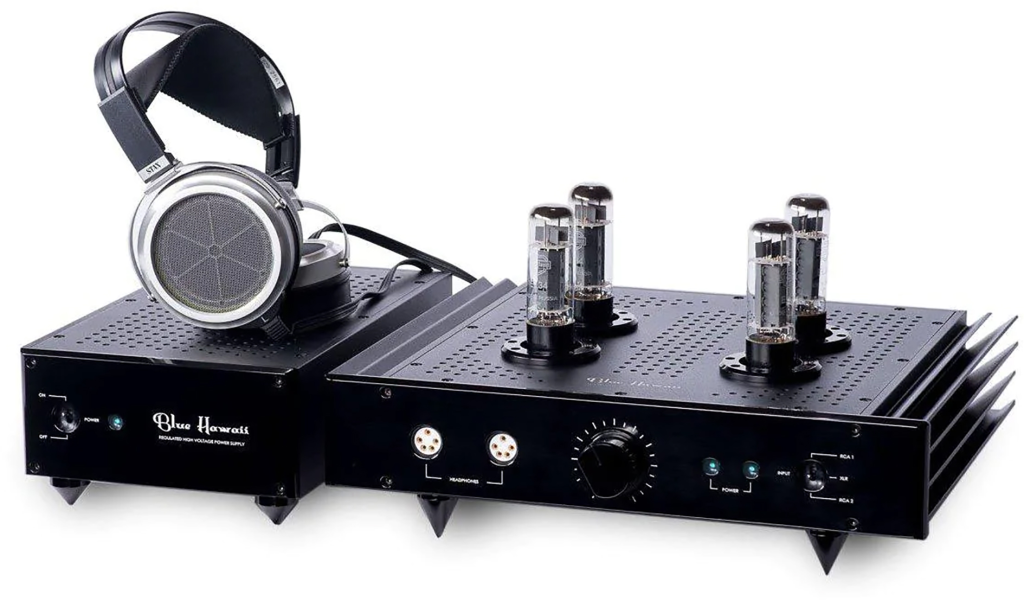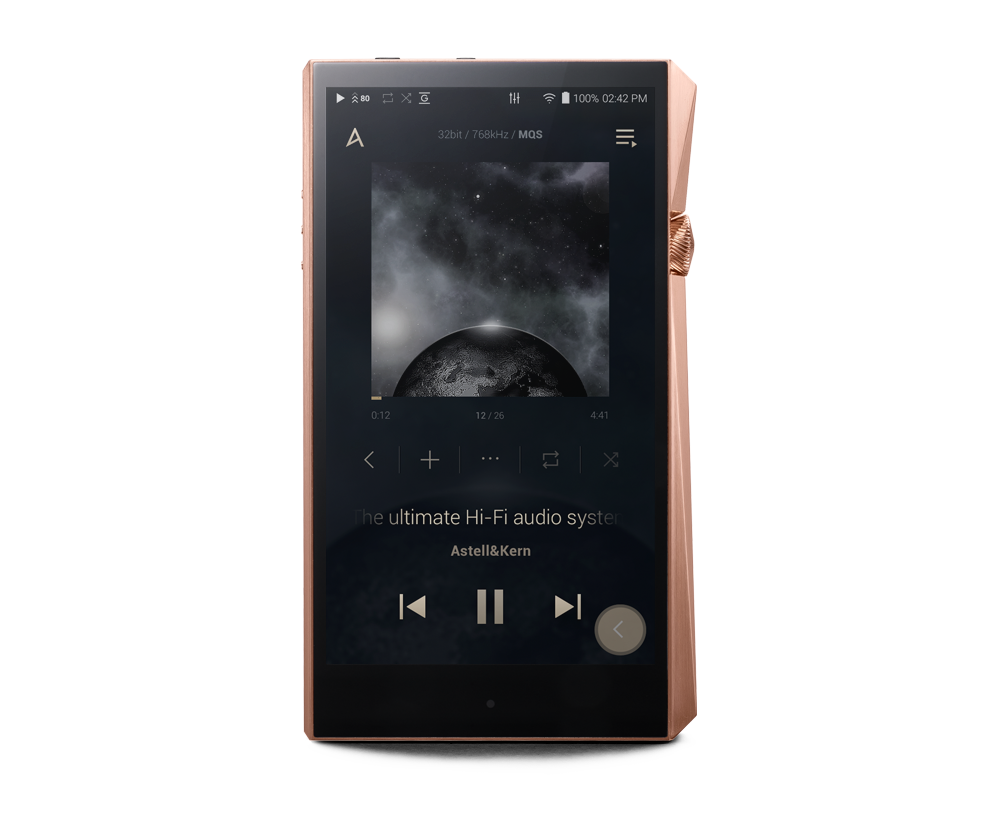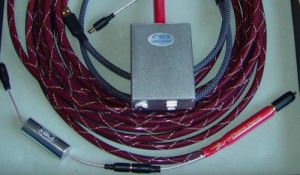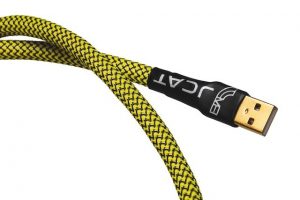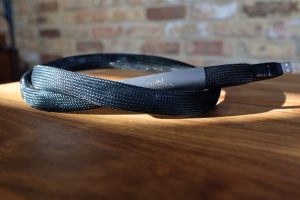
I might as well come out and admit it. I've been a big fan of Oppo Digital and their product lines since I first tried them out, years ago now. I think that I've been through almost every one of their players from way back when. That would include the DV-983 DVD/audio player…don't think that I made it all the way back to the DV-980. I don't think. I still have my BDP-83 SE, which I carry with me and use in university classrooms whenever I'm looking for quality DVD and Blu-Ray operation. (I'm the envy of other professors, believe me.) I think that I've had just about every model since the 83, and have been able to track the constant improvement in the Oppo line.
All along the way, I…like many other reviewers and audiophiles…have been knocked out by the unique combination of excellent features and utility with price points that make the Oppo lineup irresistible to audiophiles everywhere. How they do it, I just don't know. Their line of Blu-Ray universal players seems to have all sorts of innovations in them, can play just about every disc format you'd care about (and some that you might not), and have really superior sound at their price points, including their playback of both stereo/multichannel SACDs, and Single DSD stereo and multichannel. It's nearly impossible to find anything to fault, especially at these prices. I love the BDP-103 and 105 models…they are champs!
Beyond that, the Blu Ray players have are also shown themselves to be very moddable and hot-roddable. Companies like ModWright, eXemplar Audio, and The Upgrade Company have done significant work in taking the Oppo Blu-Ray players up several more layers, by improving wiring, shielding, vibration control, providing tubed stereo output, and so on. Oppo's work has provided opportunities for other audiophile companies to take an extremely solid base platform, and show what can be done with additional effort. This is all to the good.
So what else could the good folks at Oppo come up with as an encore?
Glad you asked…
Enter the HA-1 and PM-1
The "Personal Fi" space has grown brilliantly in the past few years. As our colleague and specialist Michael Mercer and his compadres have been shouting out for years now, headphones, portable DACs (DSD and otherwise), and headphone amps are an exploding market segment for both general and fine audio. Sales are up all over, with many companies fishing the waters of a different demographic, and looking for profits in a realm that's bigger than it's ever been.
A number of players in this game have made a splash here: ALO, AURALiC, Astell&Kern, Audeze, Sennheiser (of course!), McIntosh, Cardas, JH Audio, Schitt Audio, Audio-Technica, Grado, Beyer Dynamic, MrSpeakers, Stax, HiFiMAN…on and on the list goes. It's quite a lively and competitive world.
But one name that has not appeared on personal fi lists before this is one that is otherwise well-known to audiophiles: Oppo Digital.
That is, until this year.
Oppo had been sending me signals that something big was up, something that we would be very interested in. Turns out, they got that right.
When I got advance confirmation that Oppo had released planar headphones and a headphone amp, and that they were on the way to me, I admit that I was surprised. It didn't seem to be quite in the immediate track of their previous designs, which were all optical playback systems. Then again, Oppo has always showed a determination to pioneer in some very interesting directions. Certainly this shows that they saw an opportunity in the personal fi space, and brought their formidable design skills to the task.
Technical Descriptions and Specifications
I'll start with the HA-1headphone amplifier. It requires some serious description because it is much more than simply a headphone amp. In fact, in some ways it breaks new ground, because it really acts like an "all-in-one" solution for audiophiles, especially in the personal fi/head-fi space. But it isn't limited to that domain. I'll explain what I mean in a moment.
Starting with the front of the HA-1, there is a soft-detent power button on the upper left. Next to that is the Source selector, which allows the selection among eight(!) different input options. These include RCA, XLR, USB, Mobile, Optical (TOSLINK), Coaxial, Bluetooth, and AES/EBU. This is a very refreshing number of inputs, and gives the HA-1 maximum flexibility for most users. You simply turn the selector knob to go to input selection mode, turn it again to move to the preferred source, and then push the knob. That input comes up immediately. Couldn't be easier.
Note that the source selector has another important function, that of selecting settings and options. Pushing in on this knob once will bring up the "Home Screen" view, where you have a choice of three different home base displays: Status, Spectrum, and VU meter. The first gives you a text read-out of the source, audio format, gain level, and current volume level in dB. The second gives you a dynamic frequency spectrum screen. The third gives you a nicely nostalgic pair of VUs. (Love 'em!) You simply push in, rotate the selector knob to the display that you want, and press in again.
Pressing in the Source knob twice will give you various options for operation: Screen Dimmer, Mute Operation, Headphone Gain (standard and high), and Home Theater Bypass mode (Variable Volume or Fixed Output). To scroll through the screens, simply keep pressing in on the Source control until you get to the option screen that you want. Then rotate the knob to select the option you desire, and press in to select it. For this review, I used the high gain setting with variable volume.
Beneath the power and source controls are a ¼" (6.35mm) stereo unbalanced jack, and a four-pin balanced port next door. Next over to the right is a 4.3" high-resolution display that is very detailed and easy to read. It can display any of three major screens of information: Detailed input information (text); a dynamic frequency spectrum; or classic VU meters (see above). You shift from one to another by pushing in on the Source selector, and then rotating to select the preferred view. Extremely spiffy.

The main volume pot is to the right, a large knob with a satisfying feel to the action. This is a continuous action control; there are no detents for volume. Under the volume control is the infrared sensor, for the remote control, and a USB port for Apple iPod, iPad, and iPhone devices only. PCM support is there at 44.1kHz and 48kHz. Given the number of iTunes users out there, this is a handy tip-of-the-hat to those folks. The HA-1 does handle those files, converting them to analog using its ESS Sabre32 DSD DAC chip.

The remote of the Oppo HA-1 is trim and compact, attractively styled, but quite functional. It fits in the palm of your hand, and is quite thin. All key functions are controlled from here: Power on/off, all inputs, volume, muting, display dimmer, and optical drive controls (for an Oppo Digital disc player). The only thing missing that I would have liked to have seen would be a button for phase (or polarity) inversion. Otherwise, this is a really handy, trim package.

The rear of the HA-1 is a fine collection of ports. The four digital inputs are as listed above, and are the four most commonly used in current consumer formats. The analog inputs are both unbalanced and balanced, which can then be fed to the headphone amp section, or be output to amplification. There is a separate analog "Pre Out" section that allows the HA-1 to act as an analog preamp in either balanced or unbalanced mode to external amplification. Thus, you can take any digital or analog input, and can send it to either the headphone output (one port only per time), or to amplification.
Additionally, there is a Bluetooth antenna to allow connection to such wireless devices, especially smartphones and iPad-like computers.

"But wait! There's more!"
Oppo has followed other heads-up manufacturers in providing an app that allows you to turn your iPhone or iPad into a wireless remote control for your HA-1. This makes it pretty easy to handle basic functions from the comfort of your iWhatever, and dispense with the dedicated remote. Personally, I like the Oppo remote; it's easier to get at than my smartphone in a most situations. Your mileage may vary.
The only thing missing from the HA-1 right now is an Ethernet port, to allow linkage to the Internet for firmware updates, and to connect to online streaming, or a local area network (LAN) fileserver. That's not the end of the world, though, and on the online streaming side of things is actually a bit much to expect in this design. Most manufacturers have a separate component that is focused on providing an Internet bridge, and handling the translation of TCP/IP audio data to a local file type. I can wait for that…in fact, most of the high-resolution formats that I'm really interested in aren't streaming yet. But access to LAN audio servers would be nice.
All in all, the HA-1 is a very flexible, well thought out device. It's hard to find much to fault in the design framework...as usual, Oppo has produced an exceptionally smart component.

The specifications for the HA-1 are impressive for such a compact and cost-effective design. You can find them at the Oppo site. They are exemplary for the price point.
The HA-1 DAC section handles both DSD out to Quad DSD (DSD256), and PCM out to 384kHz, including DXD at 352.8kHz. Right now, the most significant capability in its DAC is its ability to handle all flavors of DSD without skipping a beat. This makes it a rare beast already…Double DSD is pretty commonly supported now, but Quad DSD is still wading into wider acceptance. With the HA-1 you can have it now. The fact that you don't have to compromise to do so on the PCM side of things…we do all have a ton of PCM files that we're stuck with…Oh! Pardon me…"that we have"…and being able to listen to all flavors of PCM means that we don't have to make a choice.

The Oppo HA-1 and PM-1 in action on yon editor's desk! (Photograph by Robinson)

The PM-1
The PM-1 headphones are a worthy match for the HA-1. It is an over-ear planar magnetic approach to headphone design that introduces some new developments with planar phones. According to Oppo, the PM-1 employs "a unique 7-layer diaphragm, double-sided spiraling coils, and an FEM-optimized magnet system." It is driven by a two-sided, seven-layer planar diaphragm, which allows for a powerful push-pull drive that is very even. Its combination of low weight and reasonable sensitivity, plus purely resistive load, leads to headphones that are real performers. Its rated frequency response is 10-50kHz in free field. Its nominal load is 32 Ohms, with 102dB at 1mW efficiency. Nice stuff.
Sources
While evaluating the HA-1/PM-1, I used the following components upstream:
The ModWright Oppo BDP-105 two-box tubed player, with upgraded power supply tube (SACDs, DVD-As, and CDs)
Media Center 20 (Single, Double, Quad DSD)
iPhone 5 (yes, I actually tried the USB connection for as long as I could take it, and tested the app-based remote control function)
OK, so that's the general profile.
What's the payoff?

The Oppo PM-1 planar magnetic headphones in their attractive case (Photograph by Robinson)
The Sound, Part the First
First round: I listened for several months with the standard headphone cable that came with the PM-1's, the 6.35mm unbalanced stereo. The Oppo cable that come with the PM-1's are certainly solid enough. They are some three meters long, which makes them very useful for running to an easy chair, with an unbalanced 6.35mm (1/4") male stereo jack, cloth wrap, and soft vinyl-clad separate cables after the left-right division point. I put over 100 hours on these during the initial listening at my desktop system.

In Robinson's office: The desktop reference system (etc.!) layout…man at work! (Photograph by Robinson)
For all of my listening, I ran tons of recordings past the HA-1/PM-1, including all the latest SHM-SACDs from Japan (two dozen+ titles). These are not cheap discs, but they have been lovingly done, and show a purist spirit since they are stereo-only, DSD only single-layer products, done in small batches. There have also been 2-3 dozen MoFi SACDs come in, plus other SACDs from other companies. We have a growing stockpile of several hundred DSD downloads in Single, Double, and Quad DSD formats, with more being added every week, from sites like SuperHirez.com (mainly Single DSD, though now with the first of the Double DSDs appearing…Jazz at the Pawnshop now being online there), High Definition Tape Transfers with its brilliant library of analog tape transfers at Single, Double, and Quad DSD), and nativeDSD.com and ChannelClassics.com, with their superb libraries of classical and jazz recordings.
Yes, there were some high-resolution PCM recordings (e.g., Daft Punk's Random Access Memory and Beck's Morning Phase, both of which I really wish we could have in DSD), too. There's a lot of music that's stuck wearing a .FLAC jacket, though I could wish that it were otherwise. But most of my time was spent in DSD City, in Single, Double, and Quad modes.
Interesting how much cables affected my impressions over time, though.
The sound of the HA-1/PM-1 combination with the stock cables, and using my old USB reference standard, the Locus Design Group cable, was very solid. (Note that the HA-1 output was set to "High".) The presentation was rather close-in, in part because the size and configuration of the PM-1's puts the planar magnetics of the earphones in relatively close proximity to your ears, and partly due to the sound of the Locus Design cable. (Yes, Virginia, USB cables do make a difference.) Not too close, at all, but a bit closer than, say, my Audeze LCD-3s. The result is a very direct transmission…no sense of recessed playback.

The exceptional PranaWire Photon USB cable (Photograph courtesy of PranaWire)
With the new version of the PranaWire Photon USB cable, however, the sound of the HA-1/PM-1 combination improved noticeably. Details went from very good to excellent; the sense of transparency grew significantly, bringing out the strengths of the planar design. The tonality of the PM-1's with the stock cable and the Locus Design Group USB was rather warmish to my ears. There was still high frequency extension, but I think that the tonal balance was tilted somewhat towards the midrange and lower regions. Once the revised PranaWire hit the chain…a real transformation occurred. The tonal balance shifted, with the lower reaches still palpable, but now the higher end…elements like percussives, and atmospherics…being in better balance, and more open and spacious. Excellent!
The Sound, Part the Second
The final transformation to the Oppo HA-1/PM-1, however, occurred with one further set of cable upgrades.

The Double Helix Cables Complement3 4-pin balanced cable with Audeze connectors, plus its balanced-to-unbalanced adapter. (Photograph by Robinson)
I had been hearing lots of very favorable comments from my good friend and colleague, Michael Mercer, about the outstanding qualities of the Double Helix Cables product line. According to Michael, these were the best things for headphones that he had heard. I finally decided that I needed to check out the DHC headphone cables; if they were that good, I wanted to hear everything that the HA-1/PM-1 could deliver, and let our PF readers know about it. (Remember: I'm the guy who doesn't necessarily drive stock!) And so I contacted Peter Bradstock of Double Helix Cables, and he kindly consented to send his Complement3 balanced cables, with a new set of Oppo PM-1-to-Audeze balanced adapters that he had just developed in response to the release of the PM-1's.
Now I know that manufacturers and designers are not generally really huge fans of third-party products that improve their own work. I can understand that…who wants to admit but in this case, I really do have to bring the attention of our readers to the effect that the DHC Complement3 had as the final piece of the puzzle.
The introduction of the Complement3 to the system allowed me to shift to the four-pin balanced headphone port of the HA-1, but that alone is not enough to explain the serious improvement that I heard with the DHC cables. Immediately, the presentation of the music, regardless of music or digital format, opened up, and became much more transparent. The detail was fantastic…textures were much improved. Dynamics were better, with a really nice sense of quickness. Tonally, the balance finally seemed to settle in a really sterling place. Top to bottom, I found the frequency ranges to feel right, with no one range standing out at the expense of another. Now the PM-1's were really hitting their stride, with the planars showing off their theoretical strengths.

The Kubala-Sosna XPander power distribution unit (left) and the darTZeel CTH-8550 integrated amplifier on a Walker Audio Prologue Amp Stand, in medias res. Two superlative audio designs and 2014 Brutus Award winners that were used in conjunction with the Oppo HA-1/PM-1 review project. (Photograph by Robinson)
[Important additional cabling note: While this will not surprise anyone familiar with Kubala-Sosna, I found that the addition of the Kubala-Sosna Elation! power cables, S/PDIF cable (for connection to from the ModWright two-box tubed BDP-105 universal player), and RCA interconnects lowered the noise floor dramatically, adds ease and an organic naturalness to the music, and improves the bloom and the sense of presence in the entire package. This was particularly underlined by the introduction of the remarkable new Kubala-Sosna XPander power distribution unit for all units in my desktop reference system.
Now I know that this adds an extraordinary level of cost to the system, and is prohibitive for many audiophiles, but I did want you to know that I tried these K-S components as well, and found the change to be so fundamental and important to everything else in the chain that I should report it to my readers. All audio components are reviewed in a context, and a given set of supporting products might supersede baseline performance. Take it for what it's worth…and don't rail at me about the price!
But now you that there's more there, there.]

Album cover for the Single DSD download of Alan Parsons Project's I Robot (Photograph courtesy of SuperHirez.com)
Naturally, I found the virtues that I'm outlining here to be particularly obvious while listening to DSD sources. I have a ton of Acoustic Sounds SuperHirez Single DSD albums in the PF library here, and regardless of whether I was listening to Beck or Soundgarden, Sinatra or the Stones, the results were always stellar. And when you went to Double or Quad DSD…well, hell, chilluns!

Album cover for the Single DSD download of Frank Sinatra's album, In the Wee Small Hours(Photograph courtesy of SuperHirez.com)
For example, I'm sitting here and listening to a Quad DSD transfer of an Opus3 Records 15 ips half-track tape…the Stockholm Guitar Quartet playing the works of Bach and Telemann in a brilliant recording by Jan-Eric Persson…and am having a truly transcendent experience. This is a transfer that I did myself, using Merging Technologies' Horus ADDA and the Pyramix 8.1 digital audio workstation back in the autumn of 2013. The results are nothing less than a pure delight! This is a complete reference benchmark, one that the recording engineer, Jan-Eric of Opus3 Records, has blessed personally. While listening to this Quad DSD via this system chain, I found myself wishing that every music lover and audiophile was able to experience the same thing that I have been.
It would change your view of the possibilities of the audio arts.
The good news is that now you can. Quad DSD downloads are already available for sale at sites likeHigh Definition Tape Transfers and NativeDSD.com. More Double and Quad DSD sites will be coming online in 2015…count on it.

Quibbles?
The main comment that I might make in this area is that the Oppo PM-1's were a little bit tight-fitting on my outer ears. I don't have the world's largest ears; if I did have ears that were much larger, I might find the PM-1's to be a bit tight. As it was, when I put them on I had to take a second or two to position my ears within the ear cups. This is not a huge issue, but if you do happen to have generous outer ears, then you will want to try-before-you-buy a pair.
If they do fit you, then you'll be fine with them…no other quibbles at this end.

Conclusions
The Oppo HA-1 headphone amp is a potent blend of capabilities; the PM-1 is a very fine planar magnetic design. I have spent many months with the HA-1 and PM-1 combination, right up to the present, listening to the Single DSD of Anima's ravishing album Sound Medicine from NativeDSD.com while I am finishing this review. During all of this time, I listened to the tandem quite extensively, on a daily basis: First in their stock configuration as a baseline, and then trying a number of changes in their cabling, as they became available. I found that the baseline was very good. At its price point, I haven't heard anything like the Oppo HA-1/PM-1 for the quality of its sound and the exceptional degree of utility that it offers the audiophile or music lover. To get Single, Double, and Quad DSD playback, plus DXD, plus PCM out to 384kHz…and have a superior headphone amp…and Bluetooth…and iPhone/iPad connectivity…and a preamp, to boot…is simply a terrific package.
Many audiophiles are grumpy about prices in the current high-end audio market, and grumble about not being able to afford new products. Well, amigos, this is your chance to get substantial value at a great price. In fact, it's a while since such a reasonably-priced pair of components has impressed me quite the way that the Oppo Digital HA-1 and PM-1 have done. The baseline combination is very fine at a combined MSRP of $2298, a relative steal in the world of audiophile pricing.
However, and if or when you have the budget for it, when you add the new, upgraded version of the PranaWire Photon USB cable, and the Double Helix Cables Complement3 four-pin balanced cable, with the Oppo adapters, then suddenly the HA-1 and PM-1 open up, bloom gloriously, become more spacious, more detailed, and their tonal balance to your ears improves noticeably. This will add about $900 for the DHC Complement3, and around $1500 or so (depending on length) for the PranaWire Photon USB cable.
If you can afford some extra scratch, then you absolutely must go with the final hardware configuration that I've outlined here, by adding the Kubala-Sosna Elation! and XPander to your system (price varies with length). This is a big step financially, but it will definitely take the headphone listening experience to a whole new level. When you add Single, Double, and Quad DSD to the source mix of what you listen to, I think you'll find that it will revolutionize your experience of headphone-based music.
And if you decide to start out with the standard configuration of the HA-1 and PM-1, isn't it reassuring to know that there are new levels of audio possibility when you're ready to purchase and explore them?
You will not be the same. And isn't that what we're all looking for in our audio journeys?
Finally, for all of these reasons I have given the Oppo HA-1 and PM-1 Positive Feedback Brutus Awards in 2014 for their fine performance and exceptional value. They are certainly not leaving here; I am adding them to my standard reference desktop system here at Positive Feedback for quality and value. If you are a desktop system/personal fi/headphone lover, you should do the same….
Oppo Digital HA-1 Headphone Amp/DSD DAC/Preamp, MSRP USD $1199
Oppo Digital PM-1 Planar Magnetic Headphones, MSRP USD $1099
PranaWire Photon USB cable, price depends on length; contact Joe Cohen for pricing
Double Helix Cables Complement3, price depends on length and configuration of connectors and adapters; contact DHC for pricing
Kubala-Sosna Elation!, price depends on length; contact Kubala-Sosna for pricing
Oppo Digital
www.oppodigital.com
PranaWire
415.897.8884
[email protected]
www.lotusgroupusa.com/pranawire.html
Double Helix Cables
www.doublehelixcables.com/store/ (You can email from the "Contact Us" link here.)
Kubala-Sosna Research LLC
Post Office Box 505
Cedar Knolls, NJ 07927
1-973-993-1952
[email protected]
www.kubala-sosna.com/index.htm
[Photographs courtesy of Oppo Digital, unless otherwise indicated.]






